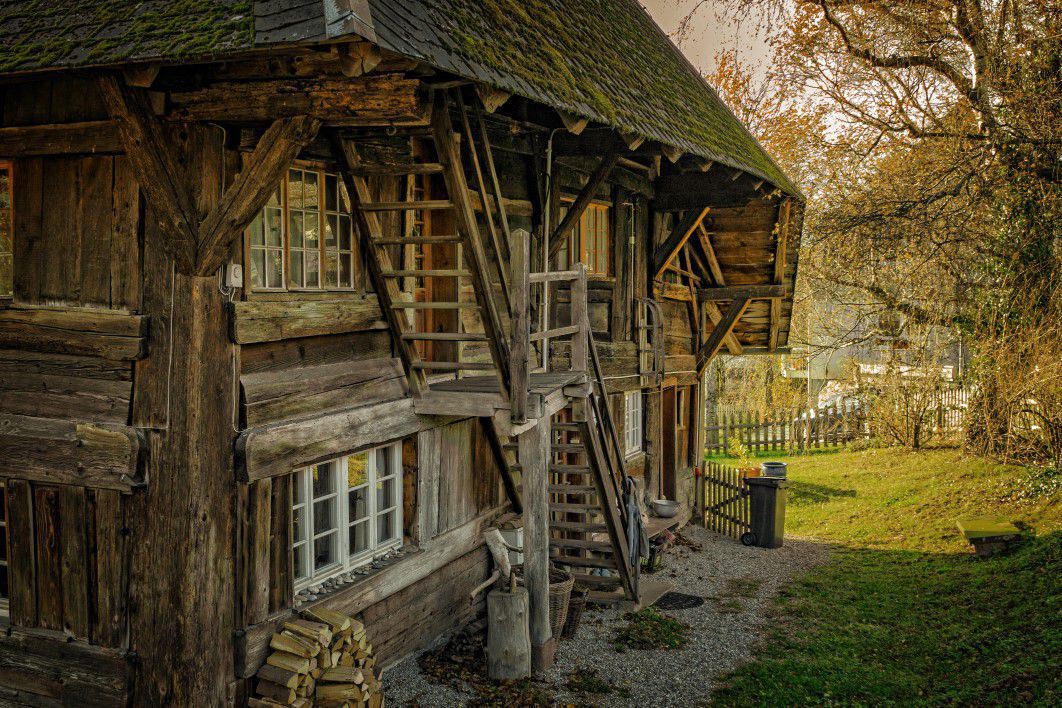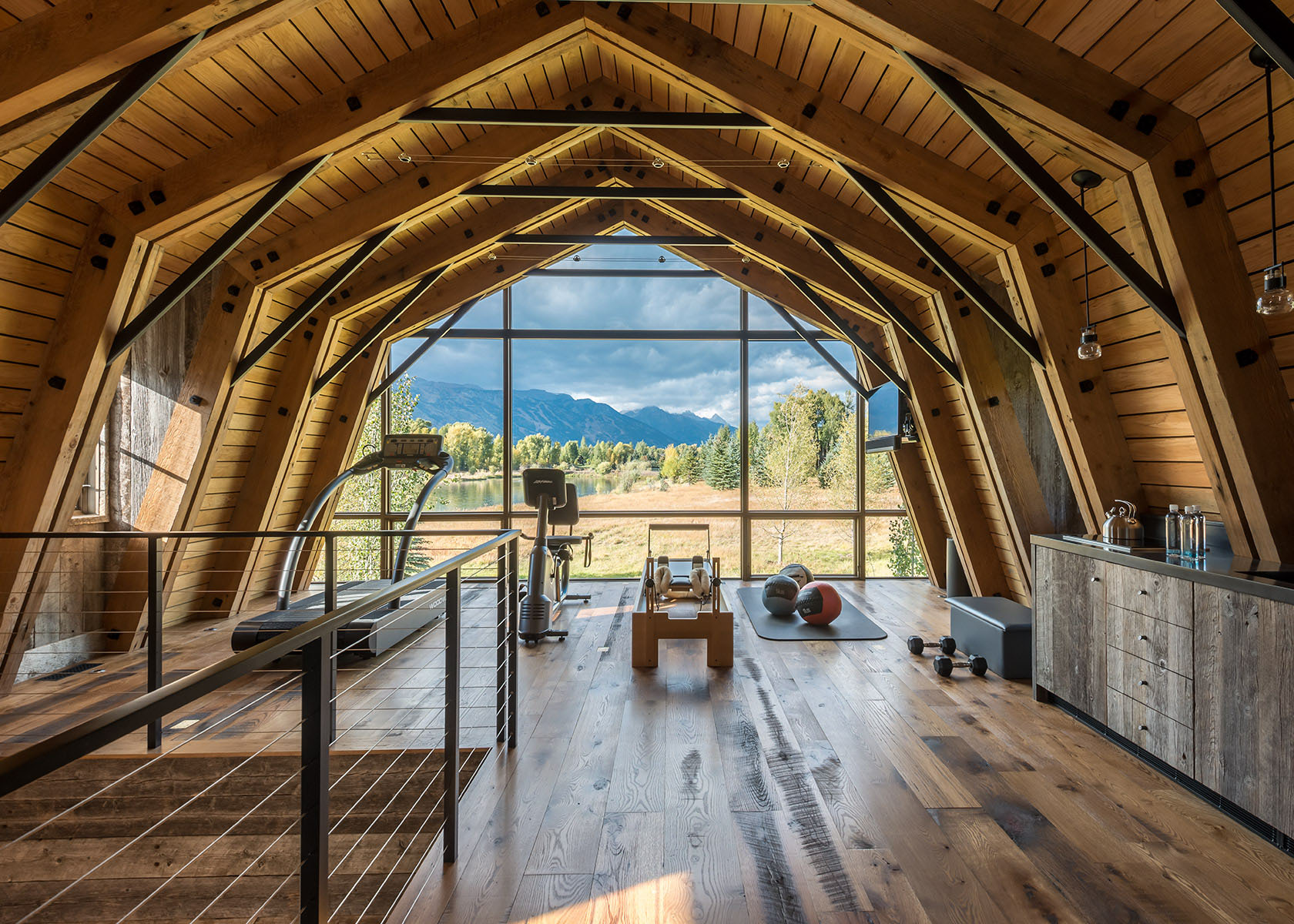The Rustic Barn House: A Timeless Blend Of Comfort And Elegance
The rustic barn house has become an increasingly popular architectural trend in recent years, captivating homeowners and design enthusiasts alike. This unique style combines the charm of traditional barn architecture with modern comforts and aesthetics. As people seek more authentic and natural living spaces, the rustic barn house offers a perfect blend of functionality and beauty.
From its origins in rural America to its modern-day resurgence, the rustic barn house has evolved into a symbol of simplicity and sophistication. Its distinctive features, such as exposed wooden beams, metal roofs, and large open spaces, evoke a sense of nostalgia while offering contemporary living solutions.
In this comprehensive guide, we will delve into the world of rustic barn houses, exploring their history, design elements, construction tips, and much more. Whether you're planning to build your dream home or simply curious about this captivating style, this article will provide you with all the information you need.
- Eureka Cordless Vacuum
- Ashley Massaro Survivor
- Hallmark Christmas Drinking Game
- Tyrus Kids Ages
- Anne Hathaway Jeans
Table of Contents
- History and Evolution of Rustic Barn Houses
- Key Design Elements of Rustic Barn Houses
- Benefits of Living in a Rustic Barn House
- Building a Rustic Barn House: Step-by-Step Guide
- Budget Considerations
- Interior Design Tips
- Exterior Design Ideas
- Maintenance and Upkeep
- Sustainability and Eco-Friendly Features
- Current Trends in Rustic Barn House Design
History and Evolution of Rustic Barn Houses
The rustic barn house traces its roots back to the early days of American agriculture. Initially designed as functional structures for storing crops and housing livestock, barns were built with practicality in mind. Over time, these humble structures have been transformed into stunning residential homes, preserving their original charm while incorporating modern amenities.
Origins of Barn Architecture
Barn architecture originated in Europe and was brought to America by early settlers. These structures were typically constructed using locally sourced materials, such as wood and stone, and featured steep roofs to shed snow and wide overhangs to protect against the elements. The design was both efficient and durable, making it ideal for agricultural purposes.
Transition to Residential Use
In the latter half of the 20th century, people began to appreciate the aesthetic appeal of barns and started converting them into homes. This trend gained momentum as more individuals sought to escape urban life and embrace a simpler, more rustic lifestyle. Today, rustic barn houses are not only a testament to their historical significance but also a reflection of contemporary design sensibilities.
- Michelle Buteau Net Worth
- Demi Moore Shingles
- Wienermobile Mini
- Stephen Love Is Blind African
- Verna Heath Channelview Tx
Key Design Elements of Rustic Barn Houses
The rustic barn house is characterized by several distinctive design elements that contribute to its unique charm. These features not only enhance the visual appeal of the home but also provide practical benefits.
Exposed Wooden Beams
One of the most iconic features of a rustic barn house is the use of exposed wooden beams. These structural elements add warmth and character to the interior, creating a cozy and inviting atmosphere. Popular wood types include oak, pine, and cedar, each offering its own unique texture and color.
Metal Roofs
Metal roofs are another hallmark of rustic barn houses. Known for their durability and low maintenance, these roofs are often made from galvanized steel or corrugated iron. They not only provide excellent protection against the elements but also give the home a rugged, industrial look.
Large Open Spaces
Rustic barn houses are typically designed with large open spaces, allowing for a seamless flow between rooms. This layout promotes a sense of spaciousness and flexibility, making it ideal for modern living. Additionally, the open design allows for ample natural light to permeate the interior, enhancing the overall ambiance.
Benefits of Living in a Rustic Barn House
Choosing a rustic barn house as your home offers numerous advantages, both practical and aesthetic. Here are some of the key benefits:
- Unique Aesthetic: The rustic barn house stands out with its distinctive design, making it a conversation starter and a source of pride for homeowners.
- Energy Efficiency: With proper insulation and modern technology, rustic barn houses can be highly energy-efficient, reducing utility costs.
- Customization: The open layout and modular design of rustic barn houses allow for endless customization options, enabling homeowners to create a space that perfectly suits their needs.
- Connection to Nature: The use of natural materials and large windows in rustic barn houses fosters a strong connection to the surrounding environment, promoting a healthier and more relaxed lifestyle.
Building a Rustic Barn House: Step-by-Step Guide
Constructing a rustic barn house requires careful planning and execution. Here's a step-by-step guide to help you navigate the process:
Planning and Design
Begin by consulting with an architect or designer experienced in barn-style homes. They can help you create a blueprint that incorporates your desired features while adhering to local building codes and regulations.
Site Preparation
Once the design is finalized, prepare the building site by clearing the land and laying the foundation. Ensure that the site is level and properly drained to prevent water damage.
Construction Phase
With the foundation in place, start erecting the frame of the house. This involves installing the wooden beams, walls, and roof structure. Pay close attention to the details, such as the metal roof and exposed beams, to ensure they meet your design specifications.
Budget Considerations
Building a rustic barn house can vary significantly in cost depending on factors such as size, location, and materials used. On average, homeowners can expect to spend between $150 and $300 per square foot. To stay within budget, consider the following tips:
- Set a clear budget from the outset and stick to it.
- Choose cost-effective materials without compromising on quality.
- Opt for a simpler design if necessary, focusing on essential features.
Interior Design Tips
Creating a beautiful and functional interior for your rustic barn house involves balancing traditional elements with modern comforts. Here are some tips to guide you:
Color Palette
Stick to a neutral color palette to enhance the natural beauty of the wood and metal elements. Earthy tones such as beige, brown, and green work well in rustic settings.
Furniture and Decor
Select furniture and decor that complement the rustic theme. Look for pieces made from natural materials, such as wood and leather, and incorporate vintage or handmade items for added charm.
Exterior Design Ideas
The exterior of a rustic barn house should reflect its unique character while blending harmoniously with the surrounding landscape. Consider the following ideas:
Landscape Design
Enhance the curb appeal of your home by incorporating native plants and flowers into the landscape. Create pathways using natural stone or gravel to complement the rustic aesthetic.
Outdoor Living Spaces
Design outdoor living spaces that extend the functionality of your home. Add a patio, deck, or garden area where you can relax and entertain guests.
Maintenance and Upkeep
To ensure the longevity of your rustic barn house, regular maintenance is essential. Here are some key areas to focus on:
- Roof: Inspect the metal roof annually for signs of damage or wear. Clean gutters regularly to prevent water buildup.
- Wood: Treat wooden beams and siding with a protective sealant to prevent rot and insect damage.
- Foundation: Check the foundation for cracks or shifting, and address any issues promptly to avoid costly repairs.
Sustainability and Eco-Friendly Features
Rustic barn houses can be designed with sustainability in mind, incorporating eco-friendly features that reduce environmental impact. Consider the following options:
Solar Panels
Install solar panels on the roof to generate renewable energy and lower electricity bills. Many homeowners find that solar power significantly reduces their carbon footprint.
Energy-Efficient Windows
Choose energy-efficient windows that provide excellent insulation and reduce heat loss. This can help maintain a comfortable indoor temperature year-round.
Current Trends in Rustic Barn House Design
The world of rustic barn house design is constantly evolving, with new trends emerging each year. Here are some of the latest trends to watch:
- Smart Home Technology: Incorporating smart home features, such as automated lighting and climate control, enhances convenience and efficiency.
- Minimalist Aesthetics: A growing number of homeowners are embracing minimalist design principles, focusing on simplicity and functionality.
- Hybrid Designs: Combining rustic barn elements with other architectural styles, such as modern or farmhouse, creates unique and innovative homes.
Conclusion
The rustic barn house offers a captivating blend of history, functionality, and beauty, making it an ideal choice for those seeking a unique and authentic living experience. From its humble beginnings as a utilitarian structure to its current status as a sought-after residential style, the rustic barn house continues to evolve and inspire.
We encourage you to explore the possibilities of this remarkable design and consider how it might fit into your lifestyle. Share your thoughts and experiences in the comments below, and don't forget to check out our other articles for more inspiration and guidance. Together, let's celebrate the timeless appeal of the rustic barn house!
- When Will Wicked Be Able To Rent
- Hayley Clifton Carmack
- Sofia Detorres
- Elisabeth Hasselbeck Bikini
- Mens Clinical Strength Deodorant

Rustic Barn House Royalty Free Photo

20+ Rustic Barn House Interior ZYHOMY

WyomingRusticBarnHouse_1